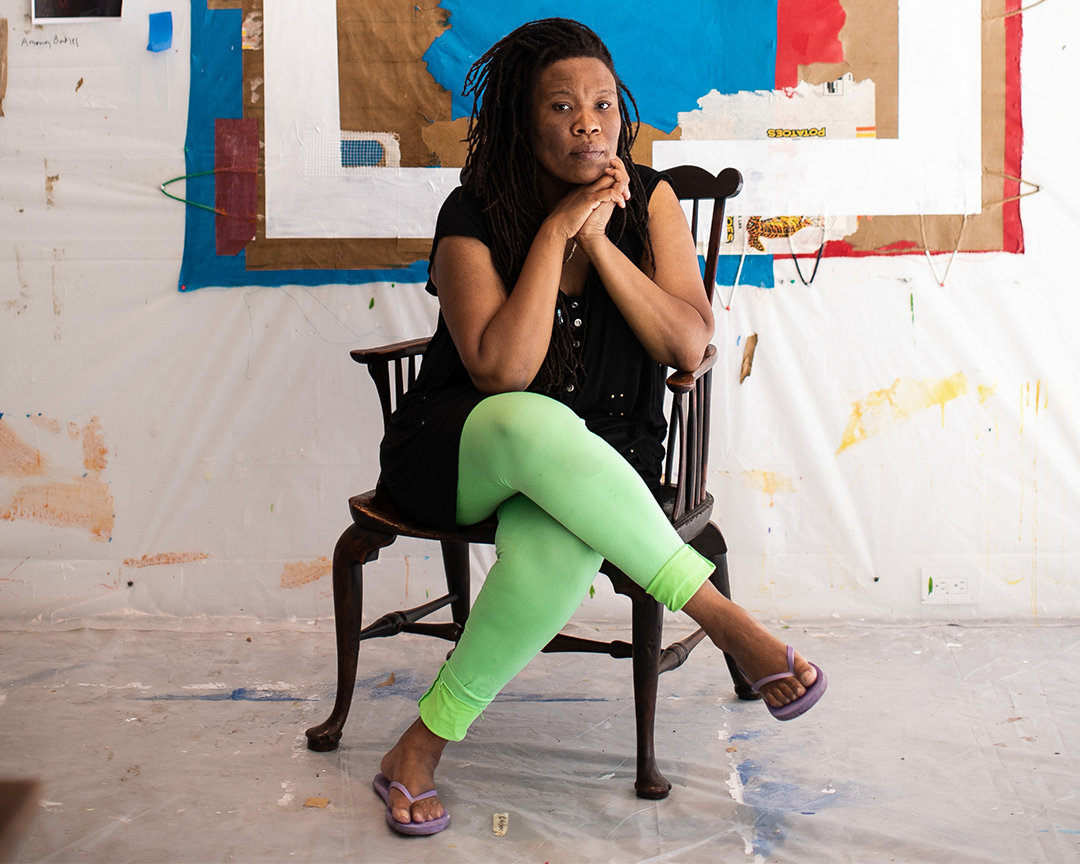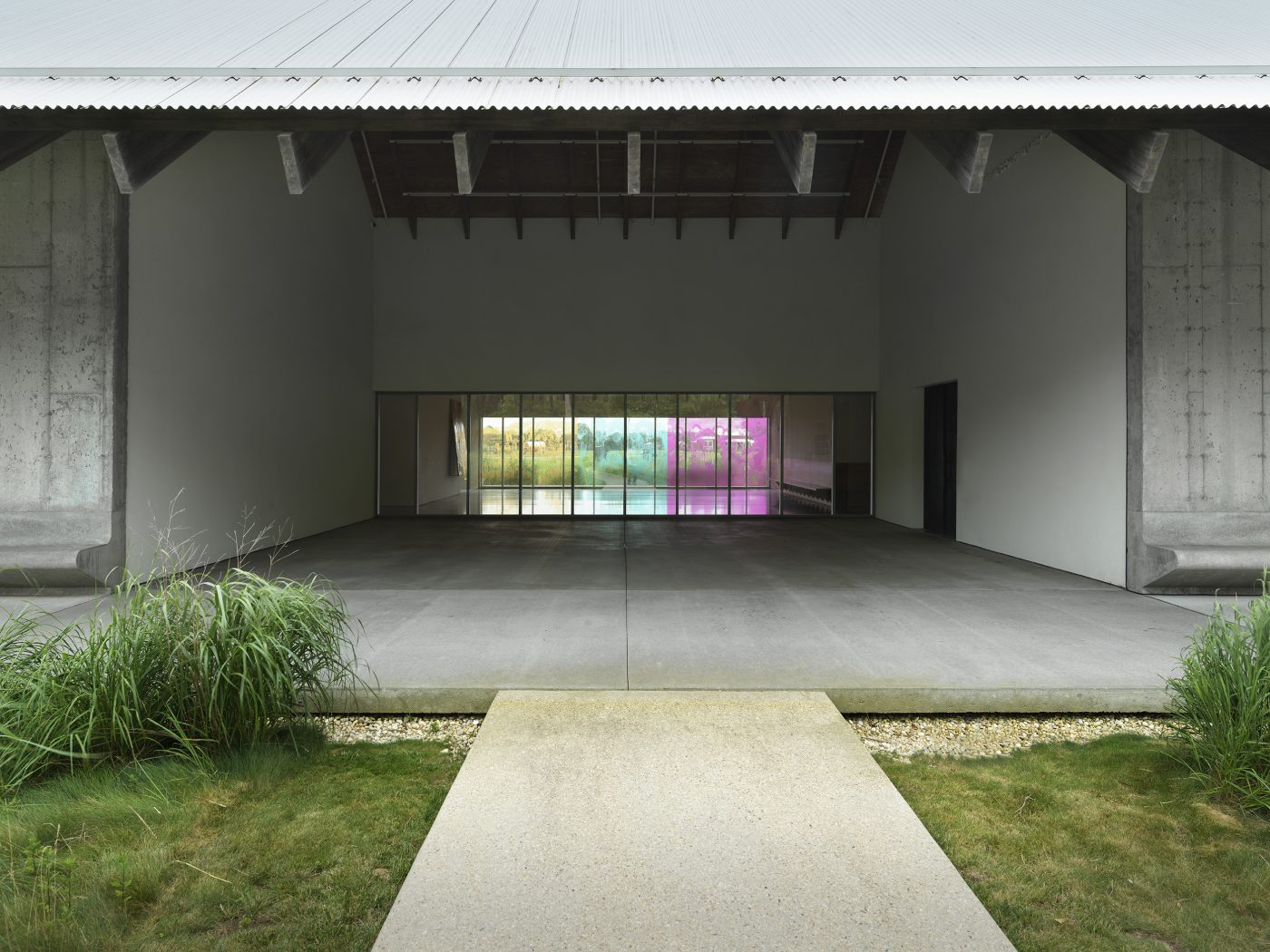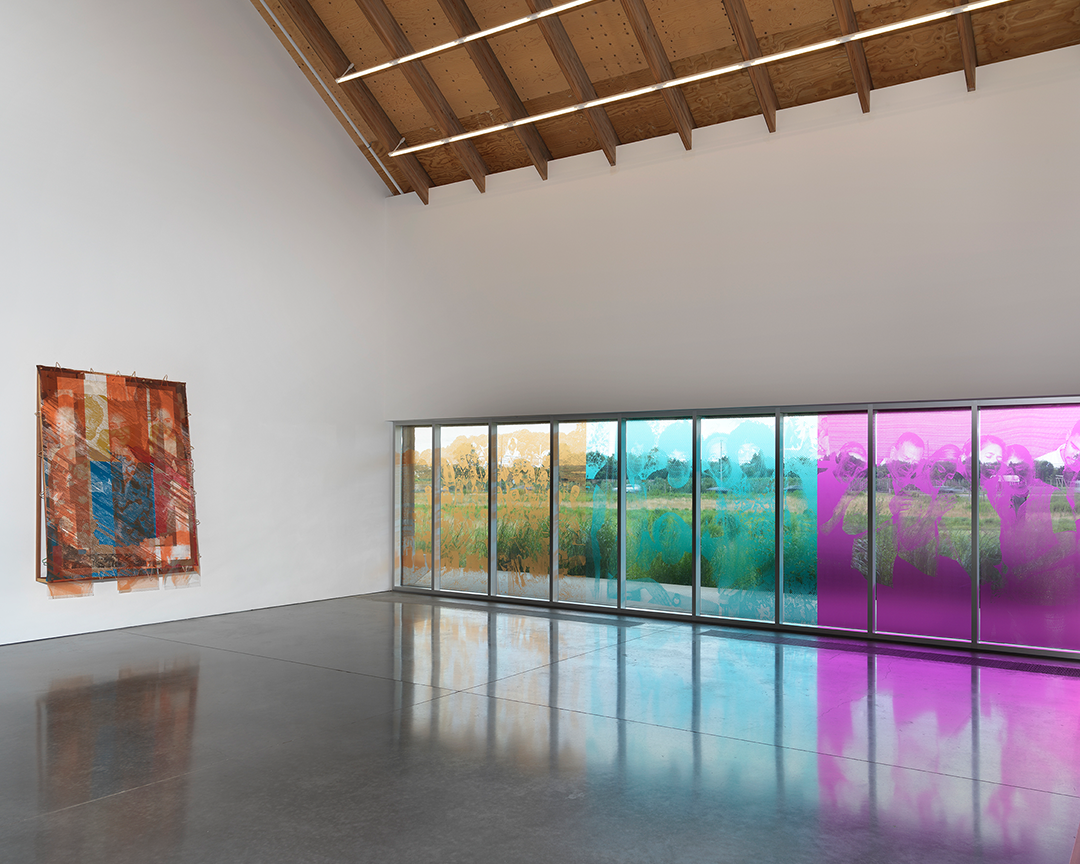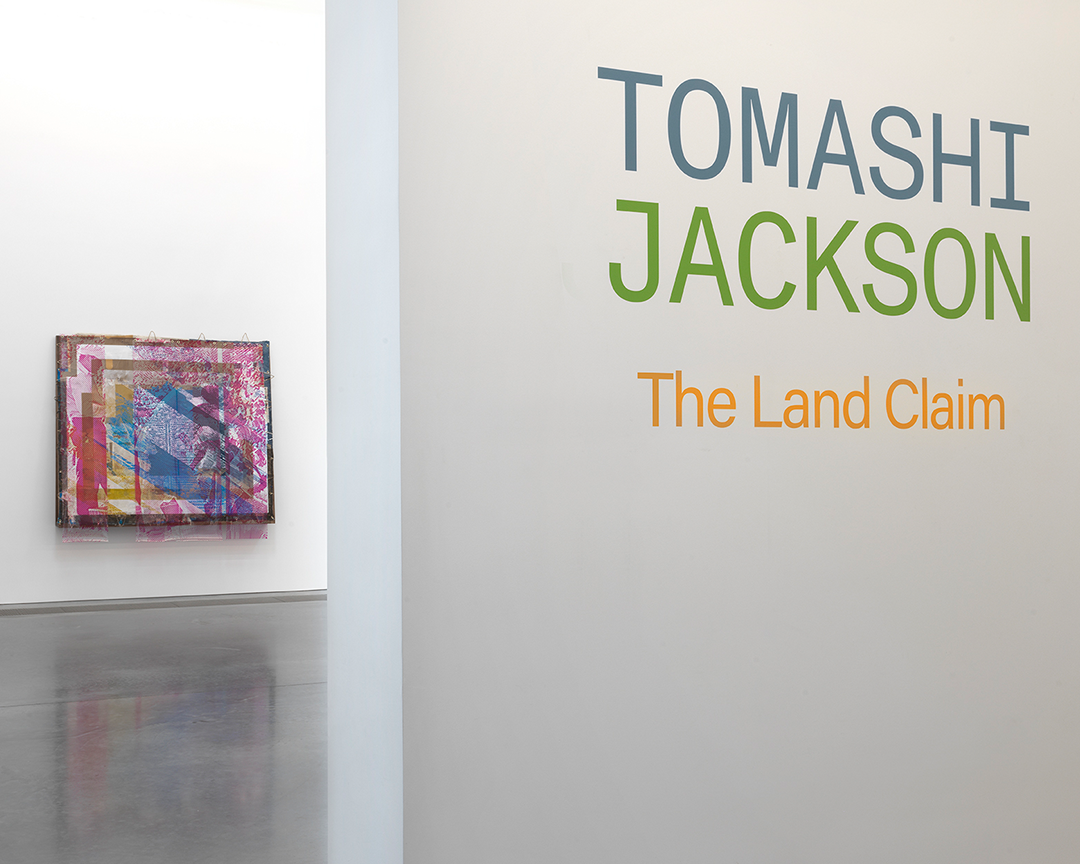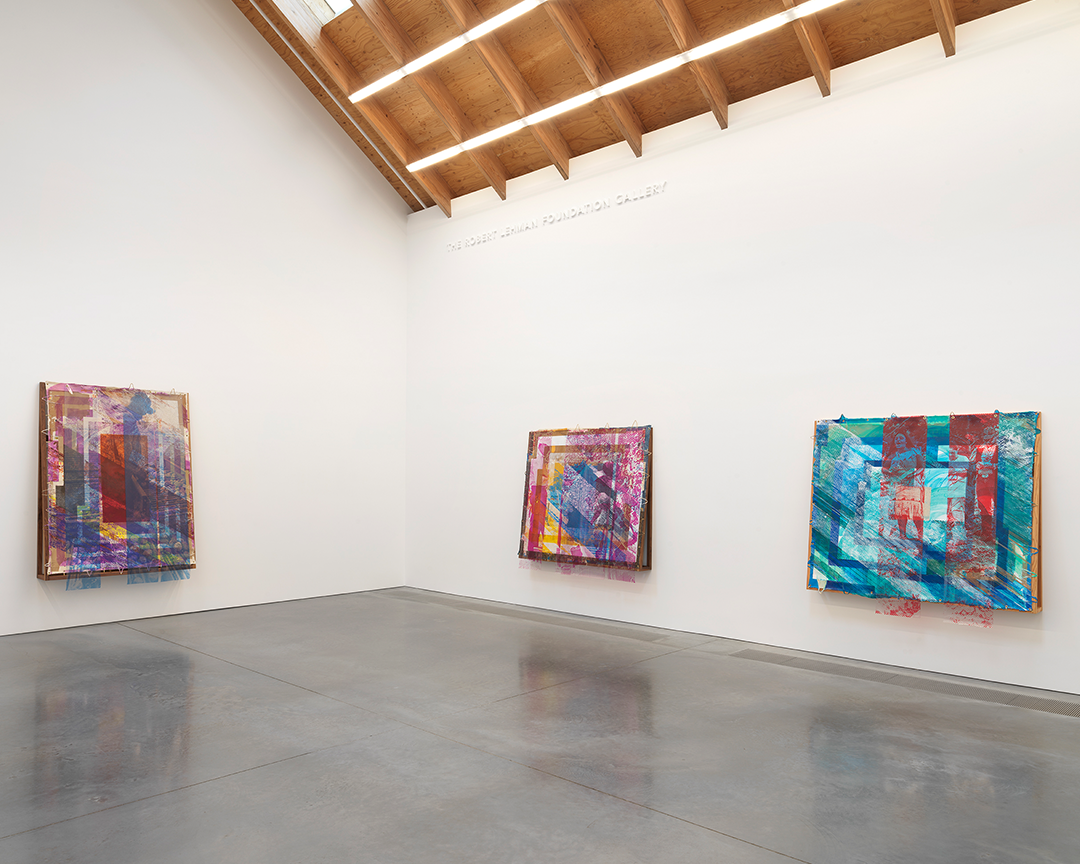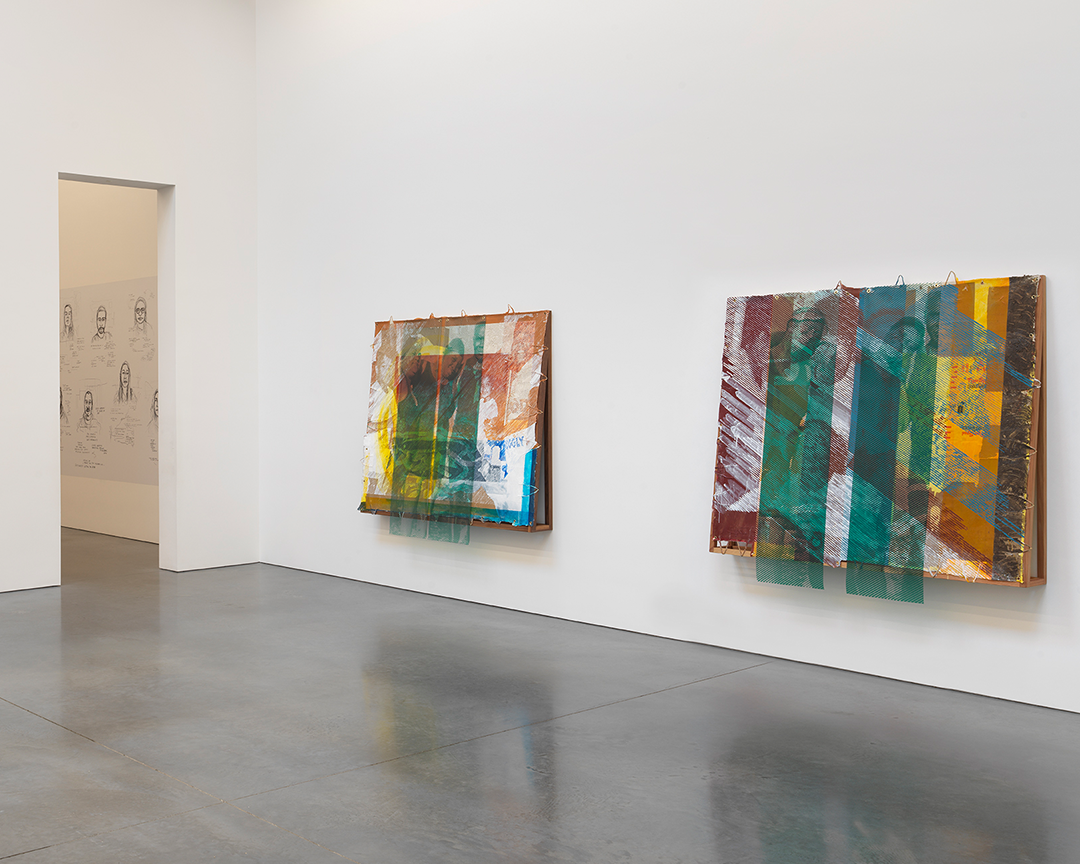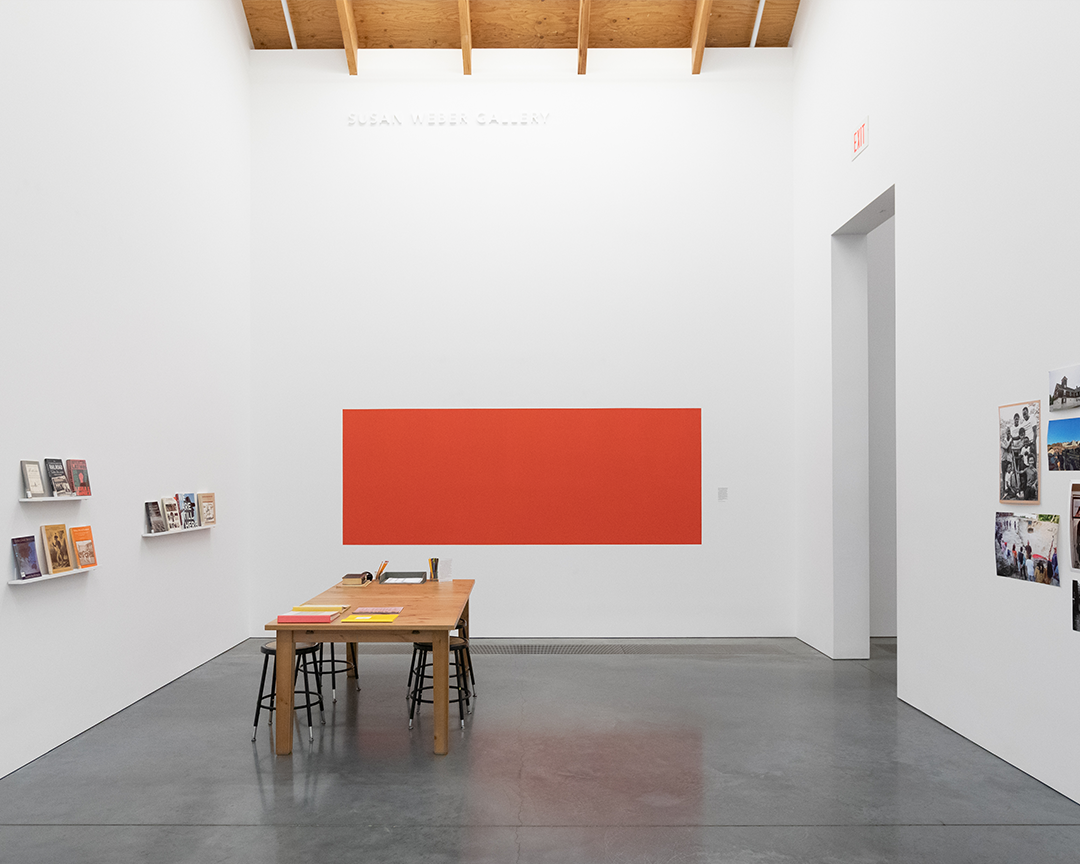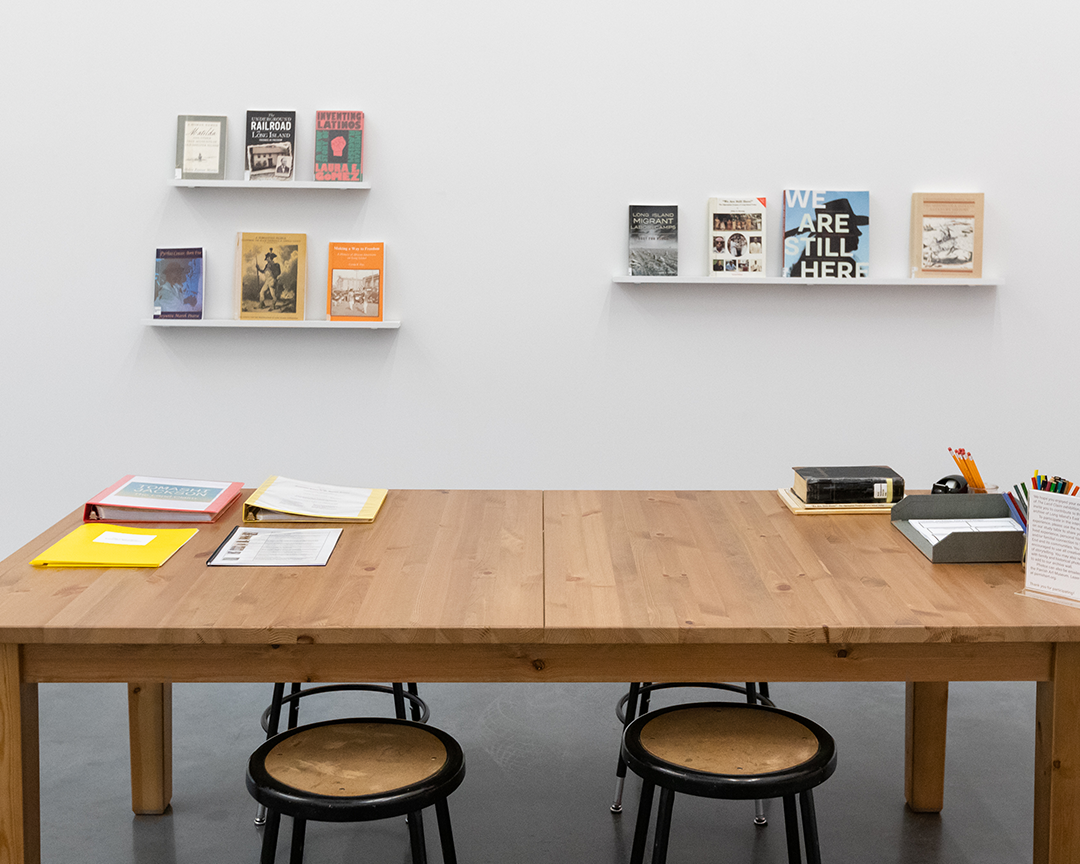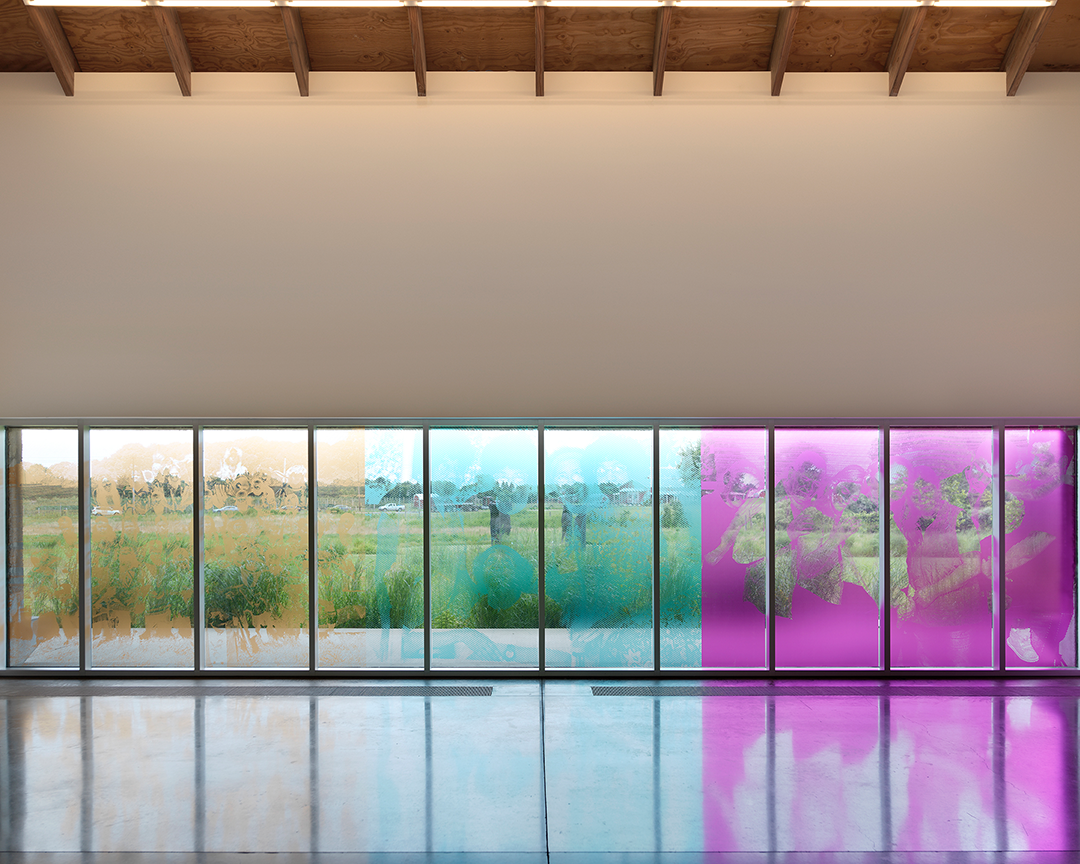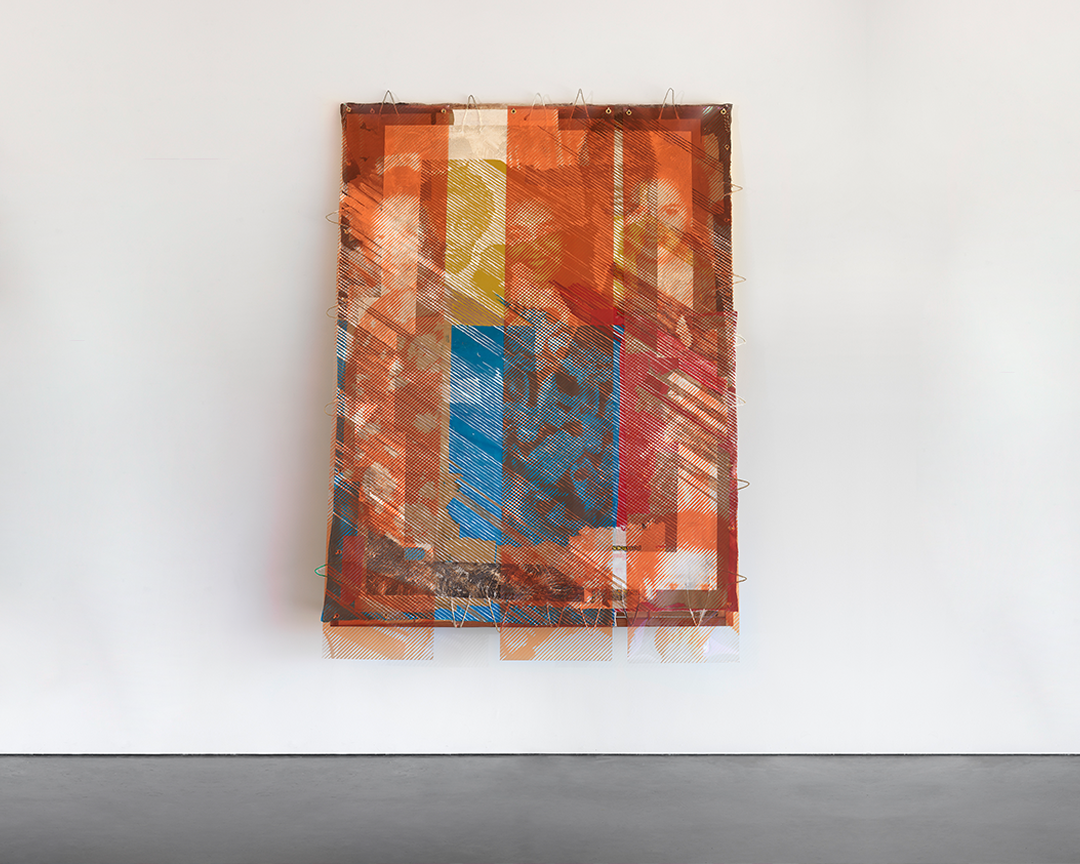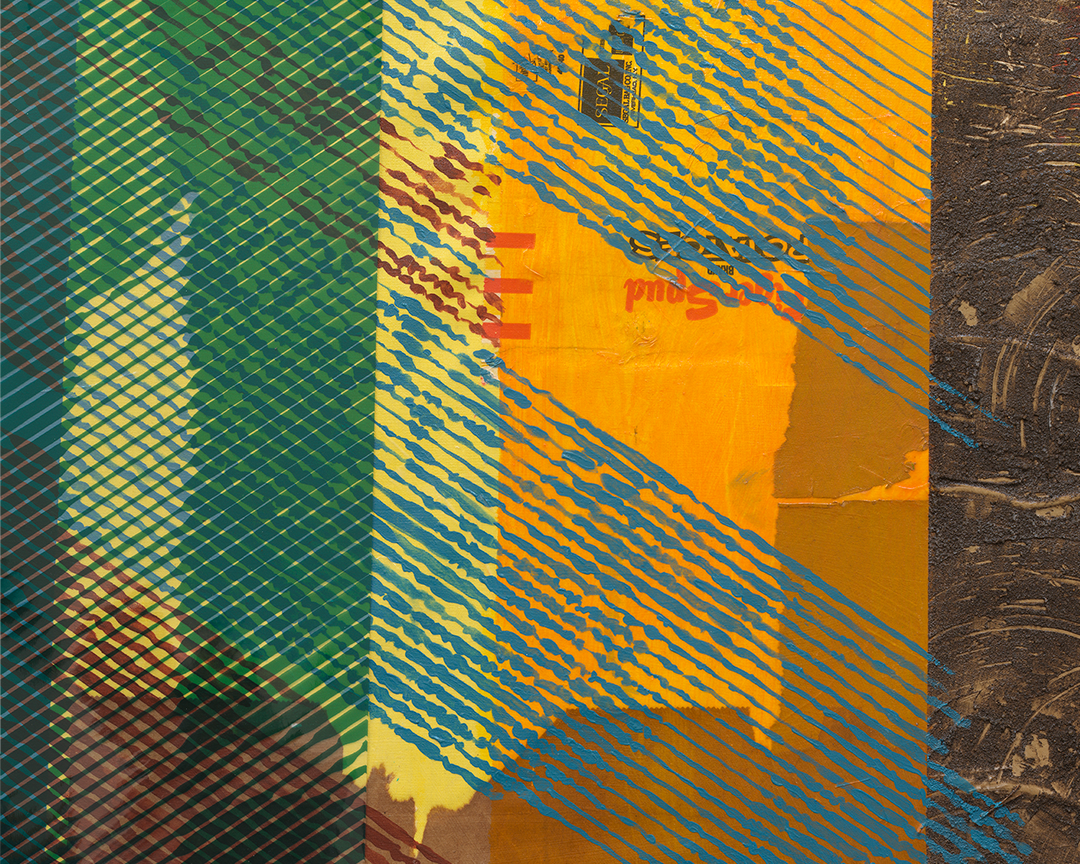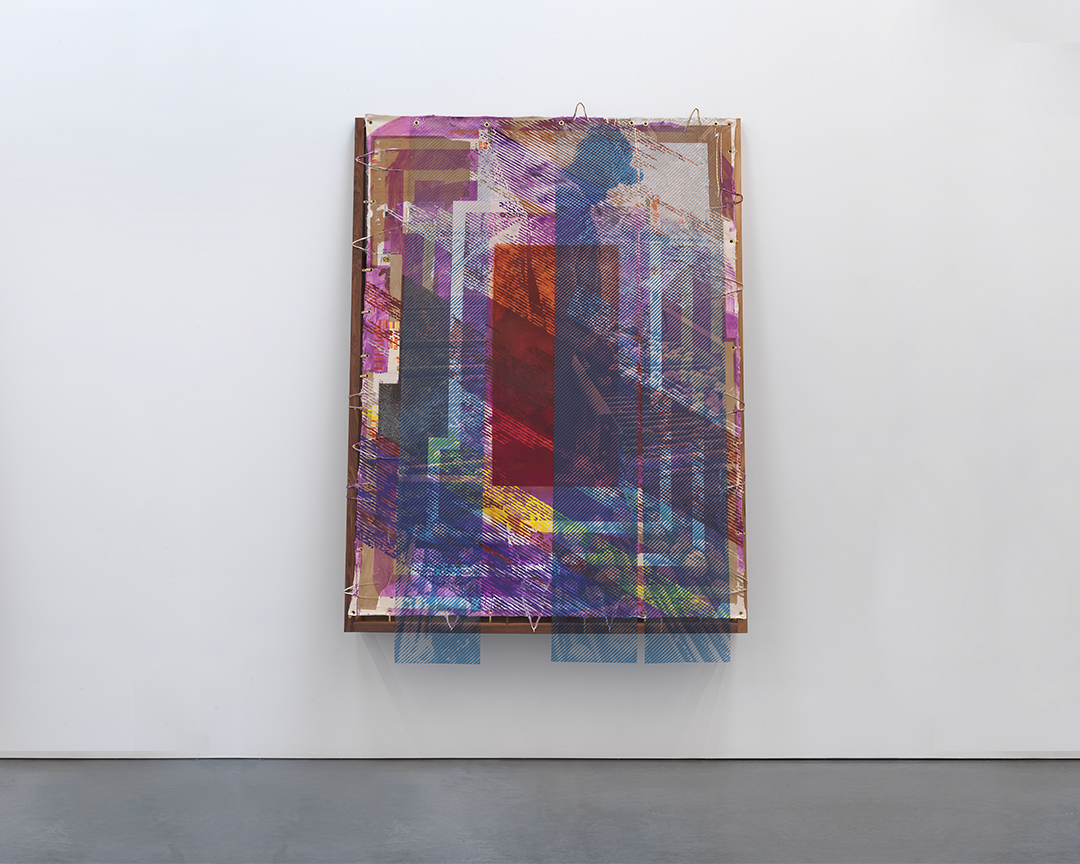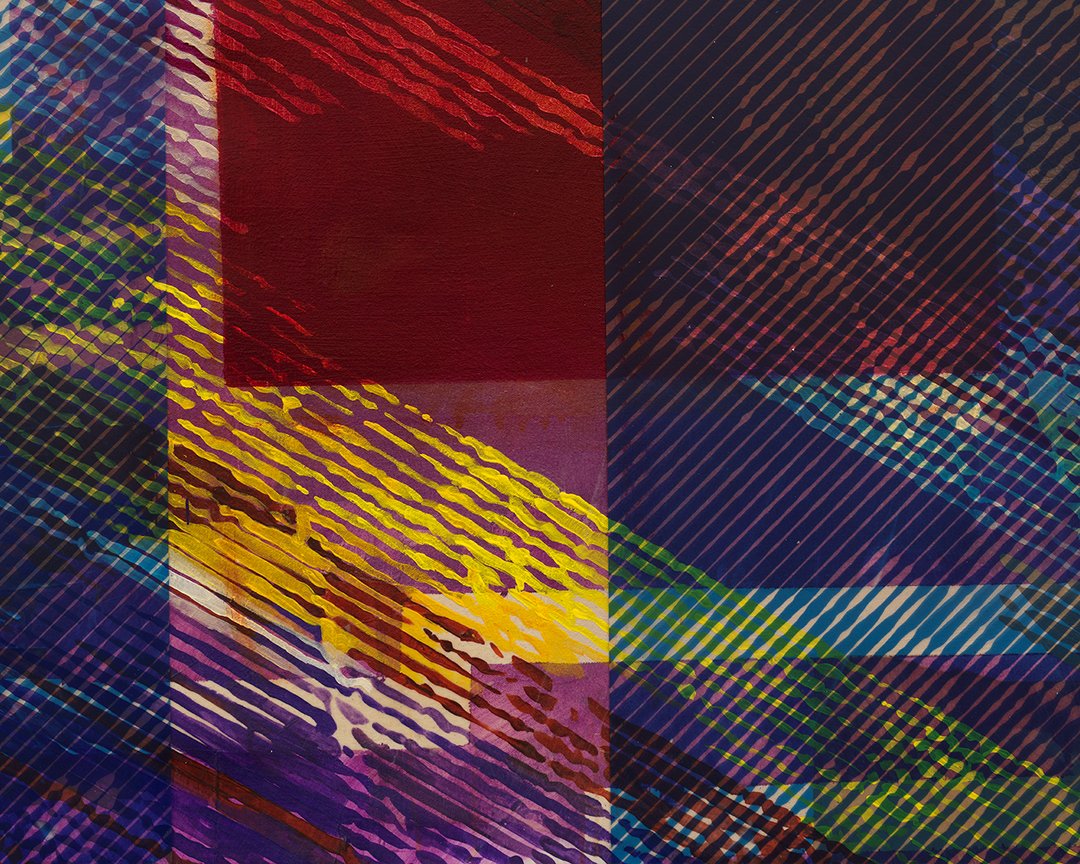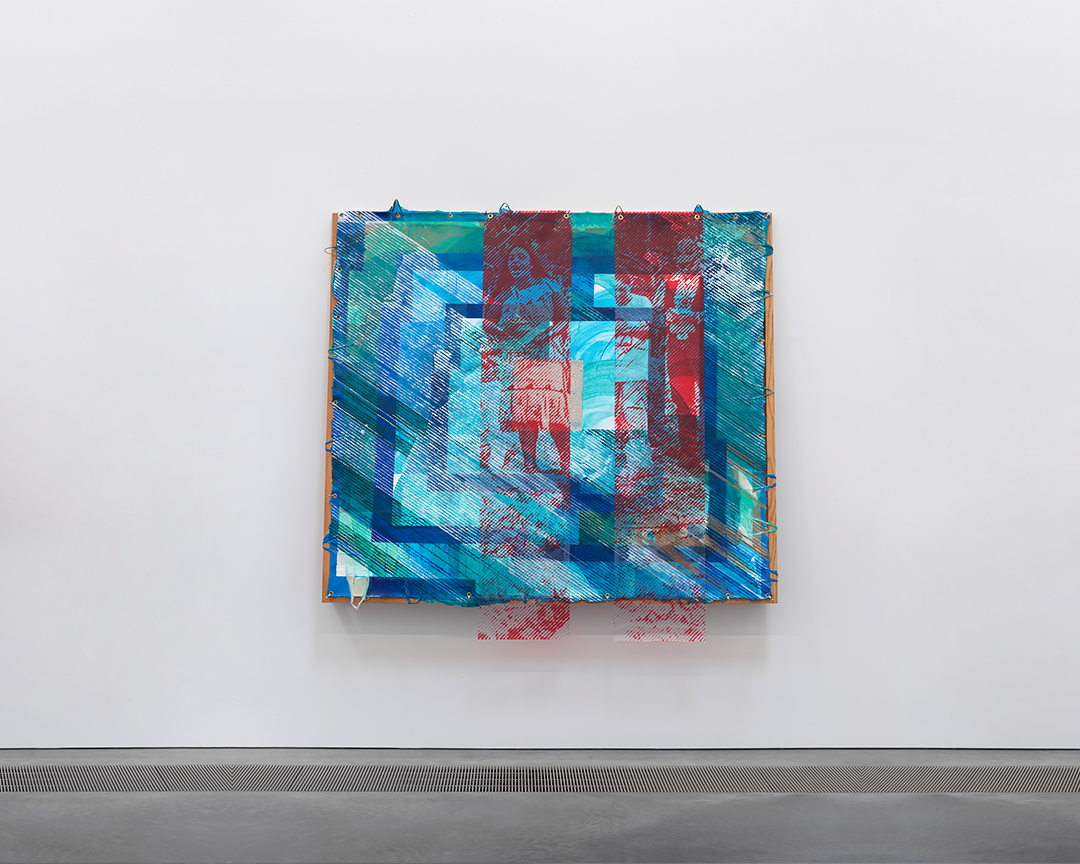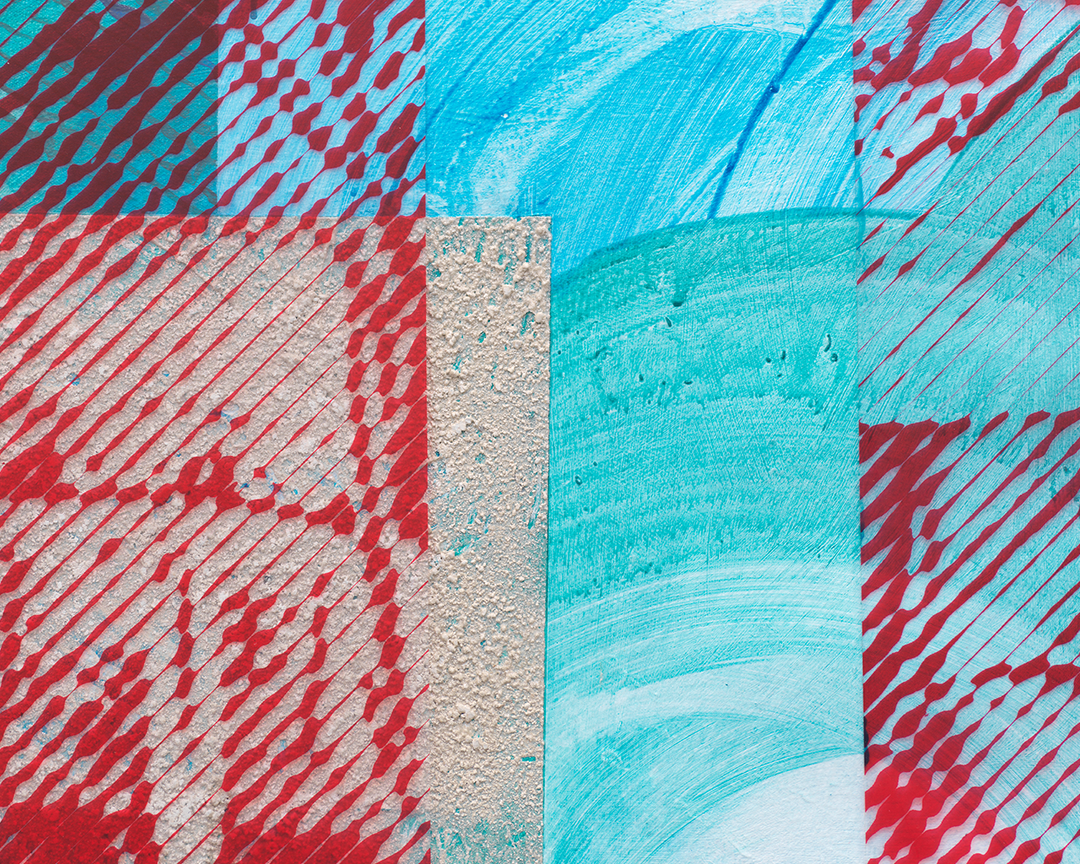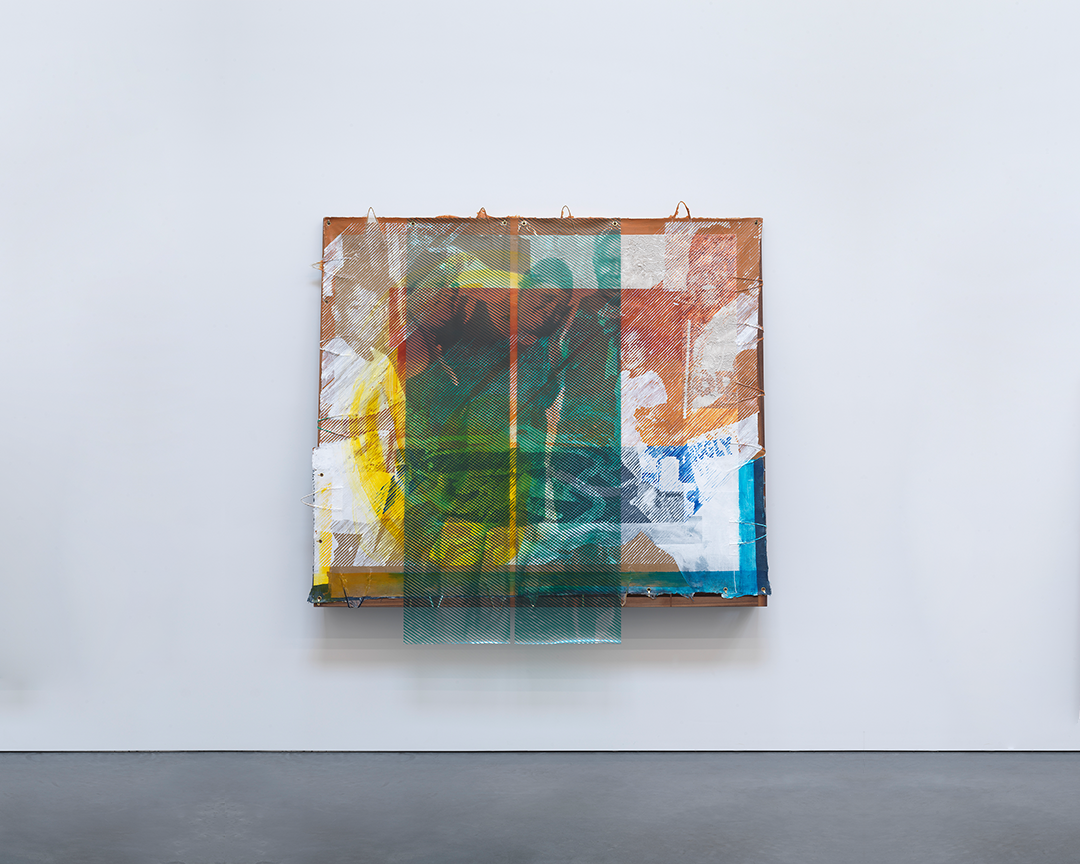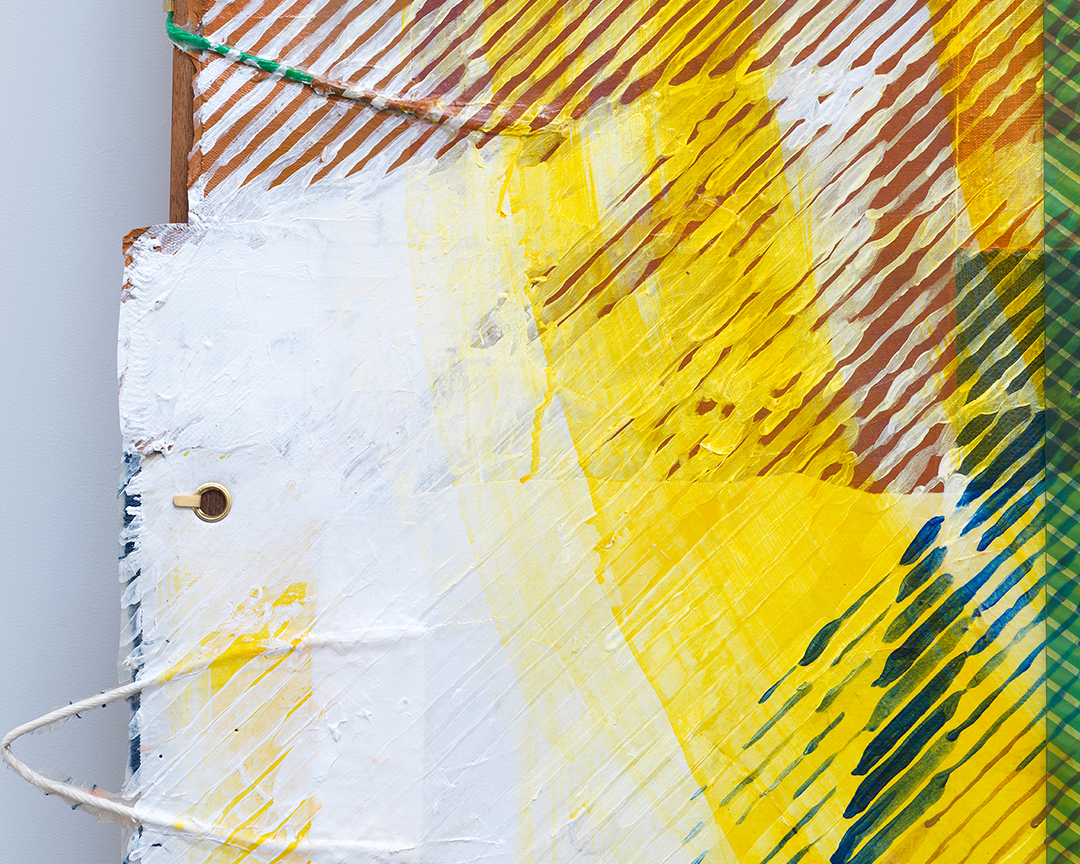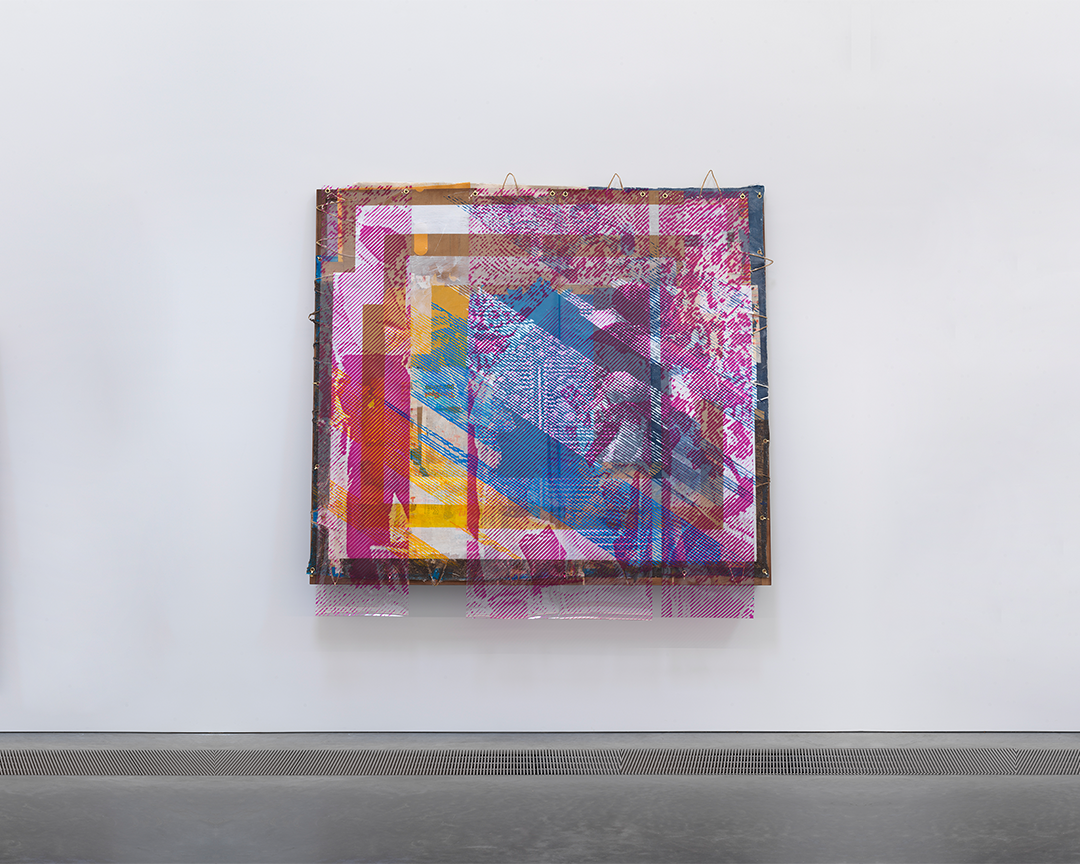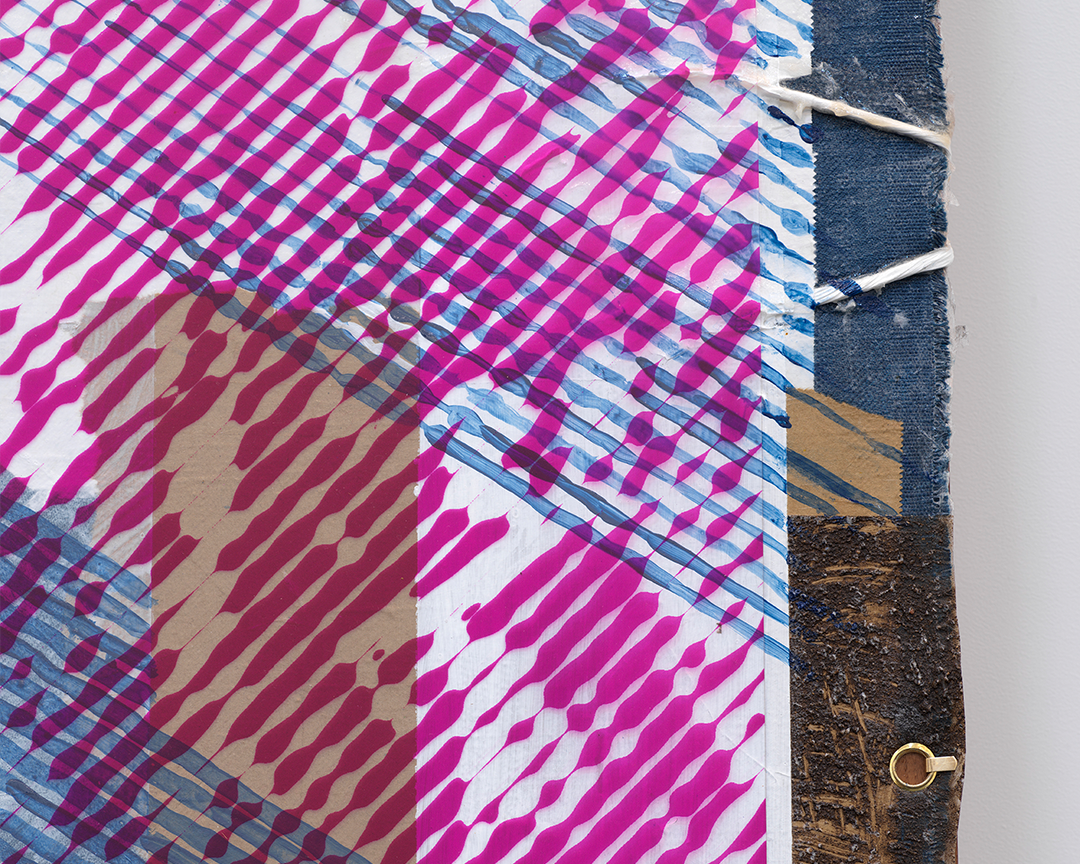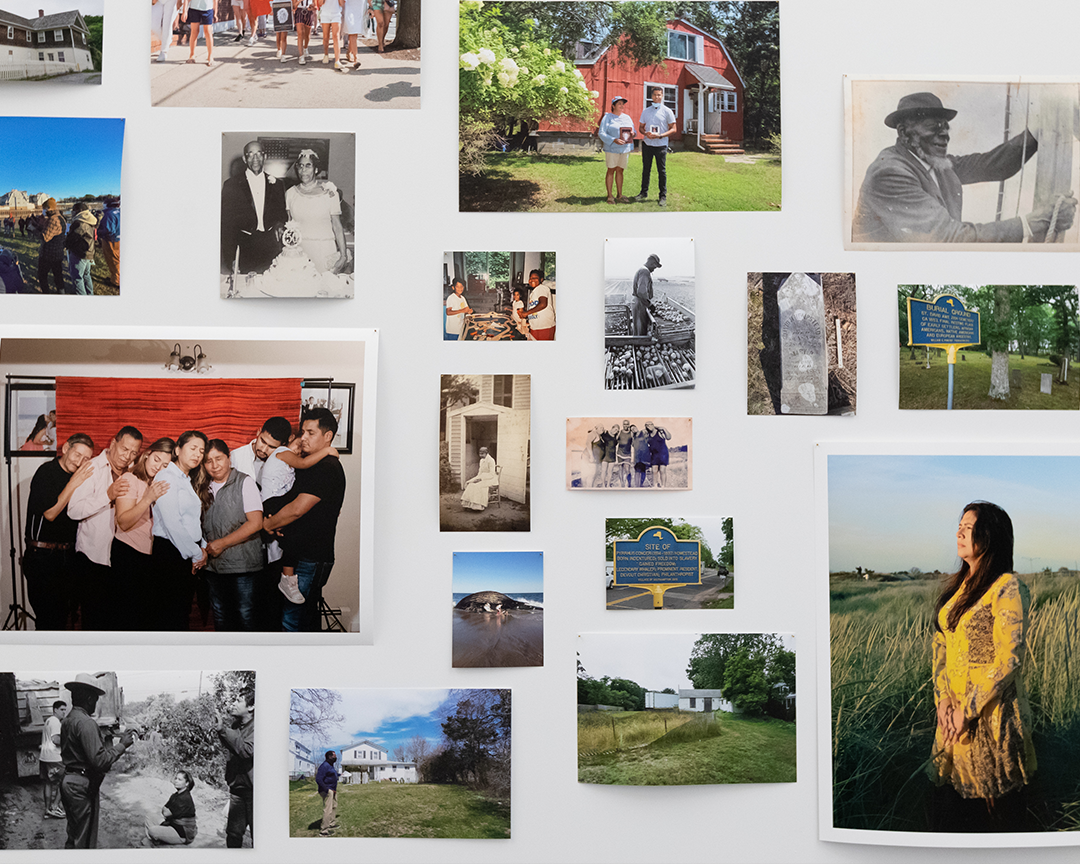Tomashi Jackson (born 1980, Houston, TX) is a multidisciplinary artist working across painting, textiles, sculpture, and video to place formal and material investigations in dialogue with recent histories of displacement and disenfranchisement of people of color, resulting in formalist compositions of exuberant color, bold geometries, and intricate layerings of material. She was invited as part of the Parrish Art Museum’s 2021 annual invitation to an artist to consider the entire Museum as a site for works that transcend disciplinary boundaries, encouraging new ways to experience art, architecture, landscape, and community.
Tomashi Jackson: The Land Claim is a multi-part exhibition of newly created work in painting, sound, photography, and archival materials that centers on the experiences—past and present—of communities of color on Long Island’s East End. The artist’s extensive research began in January 2020 when she conducted in-depth interviews with members of Black, Latinx, and Indigenous communities in the area. A conversation with a Shinnecock Nation member surfaced the history of land appropriation in the Hamptons and led to the exhibition’s title.
Jackson continued her research virtually during the COVID-19 pandemic, with live-stream public talks and online interviews. Interviewees included educators, artists, historians, and advocates from local organizations that support their communities. Throughout the process, Jackson worked with artist and educator Martha Schnee and research scholar K. Anthony Jones to analyze the interviews as well as the archival photographs provided by families, historical societies, libraries, and news sources.
The Interviews, a multi-channel sound work sited outdoors at the Museum’s entrance, was created in collaboration with Michael J. Schumacher and composed exclusively of audio from the interviews which echoes the conversations’ recurring motifs—labor, matriarchy, and sacred land. This first encounter with the interviewees’ voices provides an immediate sense of place, bringing to focus communities largely omitted from official history. Concentrating on a single speaker allows the voice of a specific interviewee to emerge as others recede into the sonic background. Yet the other voices always respond and support, integrating the unique but related perspectives of the participants.
Indoors, the exhibition begins in the Museum’s Norman and Liliane Peck/Peter Jay Sharp Foundation Lobby with Vessels of Light, a photographic composition comprised of three enlarged photographs contributed by Tomashi Jackson’s interviewees: an image of Shinnecock children dressed in regalia and gathered at Powwow grounds in 1993, provided by Jeremy Dennis; an image of female descendants of a Southampton family of Black migrant farm workers, provided by Juni Wingfield; and Juntos, New York, USA, 2020, a photograph by Steven Molina Contreras that shares an image of an immigrant family from El Salvador in a tight embrace, depicting familial moments within the three communities that Jackson worked with most closely. The painting Three Sisters, which hangs adjacent to Vessels of Light, incorporates images of intergenerational groups of women and addresses the importance of matriarchy in these communities—a common theme that surfaced during Jackson’s conversations.
The exhibition continues with six large-scale paintings in the Robert Lehman Foundation Gallery. These multi-media, multi-dimensional works are intricately layered and boldly composed; they incorporate abstraction and representation, and are both translucent and opaque. Their surfaces are embedded with locally sourced fabrics, potato bags, ground wampum shells from a Shinnecock wampum carver, and soil from the Parrish Art Museum site, which was once used as potato fields. On these varied grounds, Jackson hand-painted photographic images in halftone lines and overlaid those sections with images printed on transparent vinyl strips. The paintings’ protruding wood frames, handcrafted by Ruben Palencia, are reminiscent of storefront awnings and allow colors and silhouettes to be cast onto the walls. The dynamic compositions reflect how the themes that emerged from Jackson’s research—such as the sacredness of land, generational experiences of labor, and integral role of women in family life—are intricately interwoven and reproduced throughout history.
The Susan M. Weber Gallery is transformed into an interactive Study Room where visitors can gain a deeper understanding of Jackson’s research methodology and the under-told stories of the Hamptons. Visitors are encouraged to add images, anecdotes, and experiences to the narrative by attaching their own family photos and written accounts to the North Wall. The South Wall features notes and enlarged portraits drawn by catalogue contributor Martha Schnee, who composed her images during the interview sessions. The East Wall presents archival photographs provided by families, historical societies, libraries, and news sources—many of which are clearly visible in Jackson’s paintings. Testifying to past and present lived histories, they depict Black and Latinx migrants working on potato farms; Shinnecock Indian Nation members protesting to protect sacred land; remembrances of enslaved people at Sylvester Manor in Shelter Island; and intimate and celebratory family gatherings.
The exhibition serves as the basis for inquiry, discussion, and creative production in the Parrish’s educational programs. Exhibition themes will inform student and family workshops, adult docent tours, and gallery discussions. A 96-page catalogue, scheduled for Fall 2021 publication, accompanies the exhibition. It includes new scholarship by Corinne Erni and artist Eric N. Mack, interviews with a cohort of Jackson’s research collaborators, and drawings by Martha Schnee.
Tomashi Jackson: The Land Claim is organized by Corinne Erni, Senior Curator of ArtsReach and Special Projects, with research assistance by Curatorial Fellow Lauren Ruiz.
The interviewees who generously contributed to the research include
Donnamarie Barnes, Curator and Archivist for Sylvester Manor Educational Farm in Shelter Island
Bonnie Cannon, Executive Director of the Bridgehampton Child Care & Recreational Center (BHCCRC)
Steven Molina Contreras, a lens-based artist
Jeremy Dennis, a fine art photographer and Shinnecock Indian Nation member
Kelly Dennis, an attorney specializing in Federal Indian law and Secretary of the Shinnecock Council of Trustees
Dr. Georgette Grier-Key, Executive Director and Chief Curator of the Eastville Community Historical Society
Minerva Perez, Executive Director of OLA (Organización Latino-Americana) of Eastern Long Island
Tela Loretta Troge, an attorney and counselor at law
Richard “Juni” Wingfield, a long-time community liaison for the Southampton School District
EXPLORE THE EXHIBITION ARCHIVE
BIOGRAPHICAL INFORMATION
Tomashi Jackson, b. 1980, Houston, Texas, is an artist based in Cambridge, Massachusetts, and New York City. Her solo exhibitions include Brown II at the Radcliffe Institute for Advanced Study at Harvard University, Cambridge, Massachusetts (2021); The Land Claim at the Parrish Art Museum, Water Mill, New York (2021); Love Rollercoaster at The Wexner Center for the Arts, Columbus, Ohio (2020); Forever My Lady at Night Gallery, Los Angeles (2020); Time Out of Mind at Tilton Gallery, New York City (2019); Interstate Love Song at the Zuckerman Museum of Art, Kennesaw, Georgia (2018); and The Subliminal is Now at Tilton Gallery, New York City (2016). Her work was included in the 2019 Whitney Biennial and has been featured in group exhibitions at the Solomon R. Guggenheim Museum, New York; Moody Center for the Arts at Rice University; Los Angeles Museum of Contemporary Art; the Contemporary Arts Museum Houston; the Contemporary Art Center, New Orleans; and the Massachusetts Museum of Contemporary Art. Her work is included in the public collections of the Solomon R. Guggenheim Museum, the Whitney Museum of American Art, the Los Angeles Museum of Contemporary Art, the Baltimore Museum of Art, and the Studio Museum in Harlem. Jackson completed the Skowhegan summer residency and was a Resident Fellow at ARCAthens, Athens, Greece in 2019. She was awarded the Joan Mitchell Foundation Painters & Sculptors Grant in 2020. Jackson has taught at Harvard University, Rhode Island School of Design, Massachusetts College of Art, Cooper Union, and New York University. Her work is represented by Tilton Gallery in New York City and Night Gallery in Los Angeles.
EXHIBITION SUPPORT
Tomashi Jackson: The Land Claim is made possible thanks to the generous support of The Andy Warhol Foundation for the Visual Arts; National Endowment for the Arts; The Bandier Family Foundation; The Mr. and Mrs. Raymond J. Horowitz Fund for Publications; The Dorothy Lichtenstein ArtsReach Fund, established by Agnes Gund; Connie Tilton; The Lumpkin-Boccuzzi Family; The Deborah Buck Foundation; Miyoung Lee and Neil Simpkins; Sandy and Stephen Perlbinder; The Speyer Family Foundation, and Nina Yankowitz.
We are also grateful to Night Gallery, Los Angeles and Tilton Gallery, New York, for their in-kind support.
We are pleased to partner with The Watermill Center in support of Tomashi Jackson’s project and acknowledge their generous partnership through their Inga Maren Otto Fellowship.


